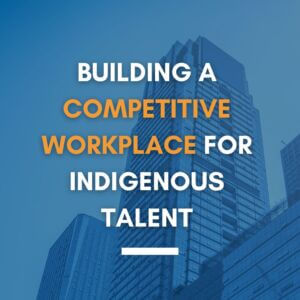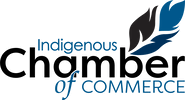By Gabriel Louër

Why Building a Competitive Workplace for Indigenous Workers Matters for Business and for Reconciliation
For many Indigenous communities, barriers to entering the workforce can hinder opportunities for economic advancement. Indigenous communities have consistently fared worse in the labour market when compared to their non-Indigenous counterparts. In part, this disparity stems from the historical legacy of systemic discrimination and the remnants of the structural barriers that were once put in place.
Indigenous Canadians are more likely to live in low-income remote communities than the typical Canadian. This structural barrier severely limits the opportunities for career development, especially in the digital age. According to a 2021 study conducted by Statistics Canada, the employment rate for Indigenous people in Canada was 61 percent, as compared to 75 percent for non-Indigenous Canadians.
The landscape, however, is quickly changing — and for the better. The very same study found that nearly 56 percent of Indigenous adults with a bachelor’s degree were likely to work in professional occupations, as opposed to 49 percent of non-Indigenous adults from the same cohort.
Moreover, according to a 2016 report by the National Indigenous Economic Development Board advancing Indigenous economic participation could add up to $27.7 billion annually to Canada’s GDP, with that number likely much higher today.
The Economic Potential Through Inclusion
These facts highlight the tremendous potential for economic development and the untapped talent that exists within Indigenous communities. As businesses and organizations focus on creating inclusive workplaces, they can both help address these historical disparities and tap into a skilled, emerging workforce.
To achieve this, businesses must adapt and remain competitive in a changing landscape by creating inclusive workplaces, ensuring Indigenous representation in leadership roles, and providing training on Indigenous history, culture, and reconciliation principles.
By integrating reconciliation planning into strategic frameworks, businesses can foster genuine partnerships with Indigenous communities, address systemic inequities, and support initiatives that drive economic empowerment. This approach not only aligns with broader societal goals but also positions businesses as leaders in building a more inclusive and equitable future.
Creating Culturally Responsive Workplaces
Many Indigenous workers face unique challenges, such as balancing community obligations or navigating cultural responsibilities. Offering flexibility, recognizing cultural leave, and providing access to resources like mentorship programs and cultural advisors can help address these needs.
Indigenous youth, who represent 45 percent of the Indigenous population, are a rapidly growing demographic with immense potential. By creating pathways for young Indigenous professionals, businesses can tap into this emerging talent pool and help shape the future of Canada’s workforce — a critical task in our aging society.
Attracting Indigenous talent goes beyond corporate social responsibility; it’s an opportunity to support economic reconciliation and drive long-term growth for all involved. By creating inclusive, culturally respectful workplaces, businesses can bridge the employment gap, tap into untapped potential, and contribute to a more prosperous future for all Canadians.
Ready to turn UNDRIP knowledge into action? Join our "Understanding Indigenous Rights and Responsibilities" training on February 6 – the first session in our comprehensive four-part series. This focused workshop will equip you with practical strategies to navigate Indigenous partnerships and business opportunities. Learn more about our training series.
Join Our Newsletter
As Manitoba's voice for Indigenous business and your partner in economic reconciliation, we connect you to opportunities that drive change. Subscribe to receive updates on Indigenous business developments, partnership opportunities, and upcoming events delivered straight to your inbox.



